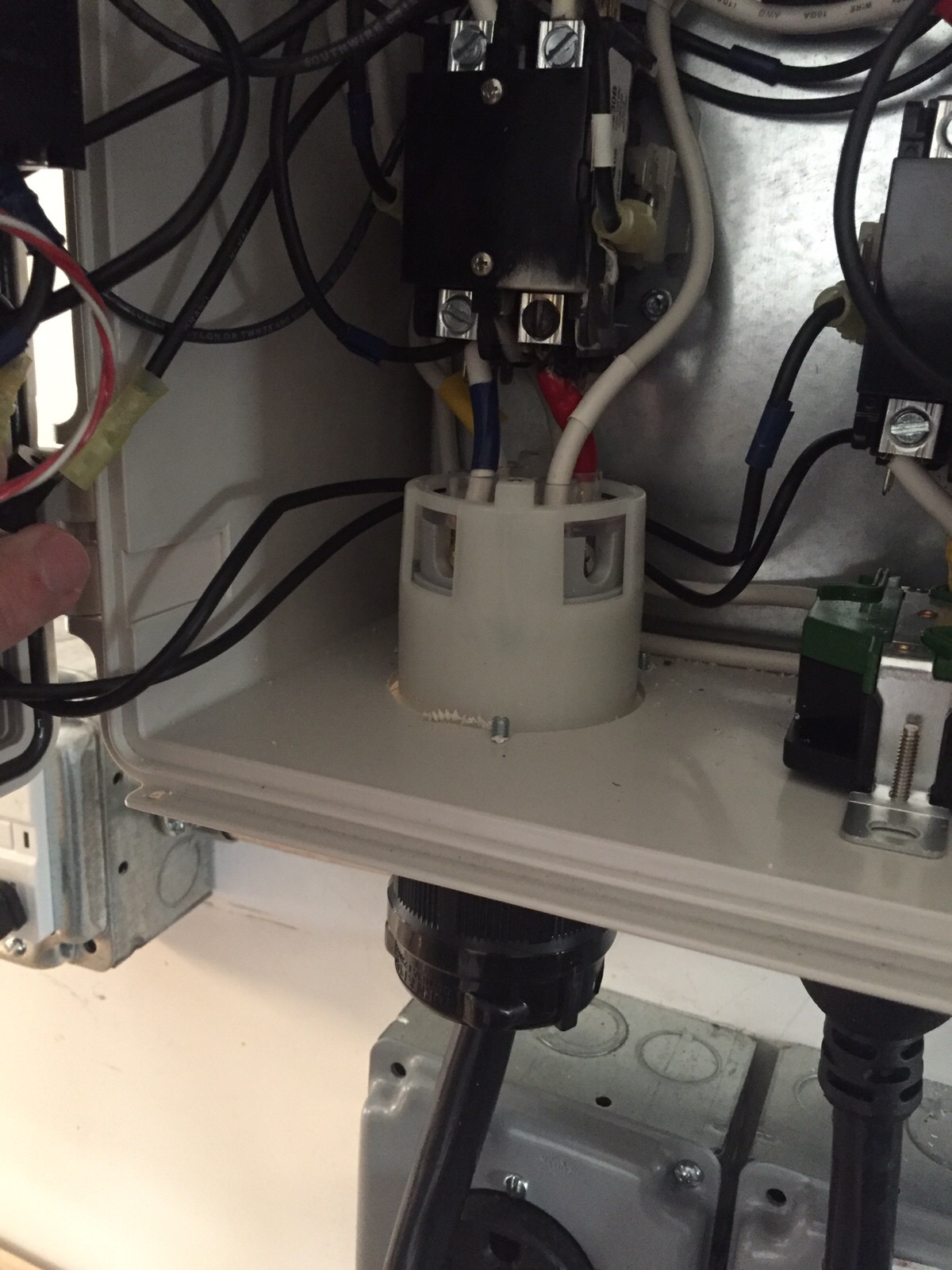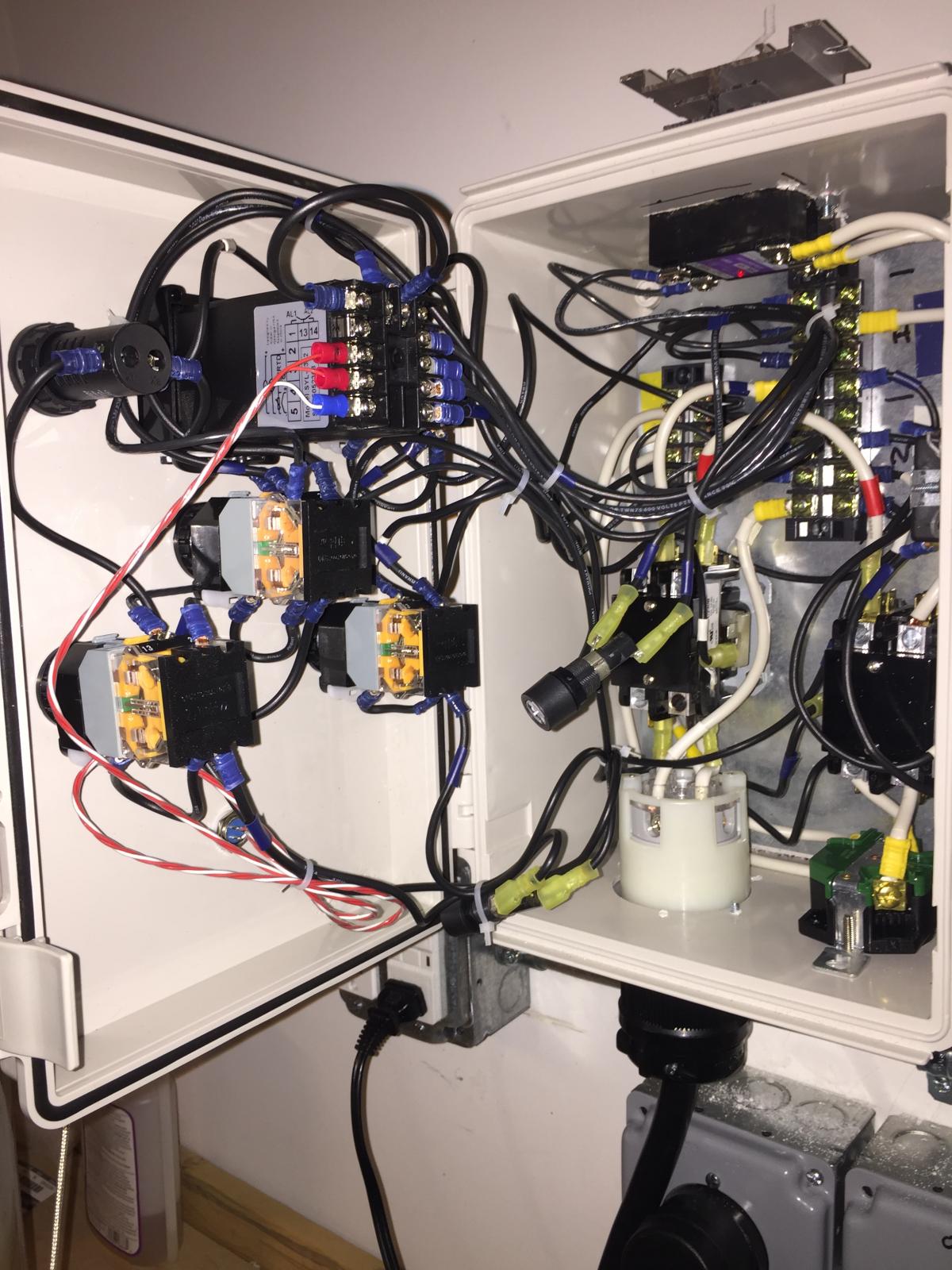virgil1
Well-Known Member
I was getting my brew ready to go. Sanitizing my silicone lines to my pump, water was in the kettle, had the probe hooked up, PID was reading 55 degrees or so, so it was reading ambient temp in my garage as I didn't have any liquid flowing across the probe yet. I had 8 gallons of water in the kettle. I had the box on because I wanted it to fire on the heating element while I finished sanitizing my silicone pump lines. I ran up stairs to give my kettle lid a good scrub, and when I came back down I smelled some burning, and saw some smoke coming out of the panel. I shut it off immediately. It was coming from an connection to the contactor. One of the 120V lines in that goes directly to the contactor. Needless to say I halted the brew day while I research my best course of action. An idea:
1. I had turned on the heating element, and the probe was just measuring the garage temp at the time. So it was 'always on'. The PID was set to 150 degrees. It wasn't seeing any change in temp so it wasn't flipping on and off. I think it usually flips on and off, and having it 'on' for so long exposed a 'not so great connection' I had from my inlet to my contactor.
Any other thoughts? Do I just need to replace the wire that melted a bit, and make sure the connection is ok, or should I replace the contactor too? They are only $10, but I am not sure there is anything wrong with it.
Here is my build:
https://www.homebrewtalk.com/showthread.php?t=538782
Thanks!
1. I had turned on the heating element, and the probe was just measuring the garage temp at the time. So it was 'always on'. The PID was set to 150 degrees. It wasn't seeing any change in temp so it wasn't flipping on and off. I think it usually flips on and off, and having it 'on' for so long exposed a 'not so great connection' I had from my inlet to my contactor.
Any other thoughts? Do I just need to replace the wire that melted a bit, and make sure the connection is ok, or should I replace the contactor too? They are only $10, but I am not sure there is anything wrong with it.
Here is my build:
https://www.homebrewtalk.com/showthread.php?t=538782
Thanks!





